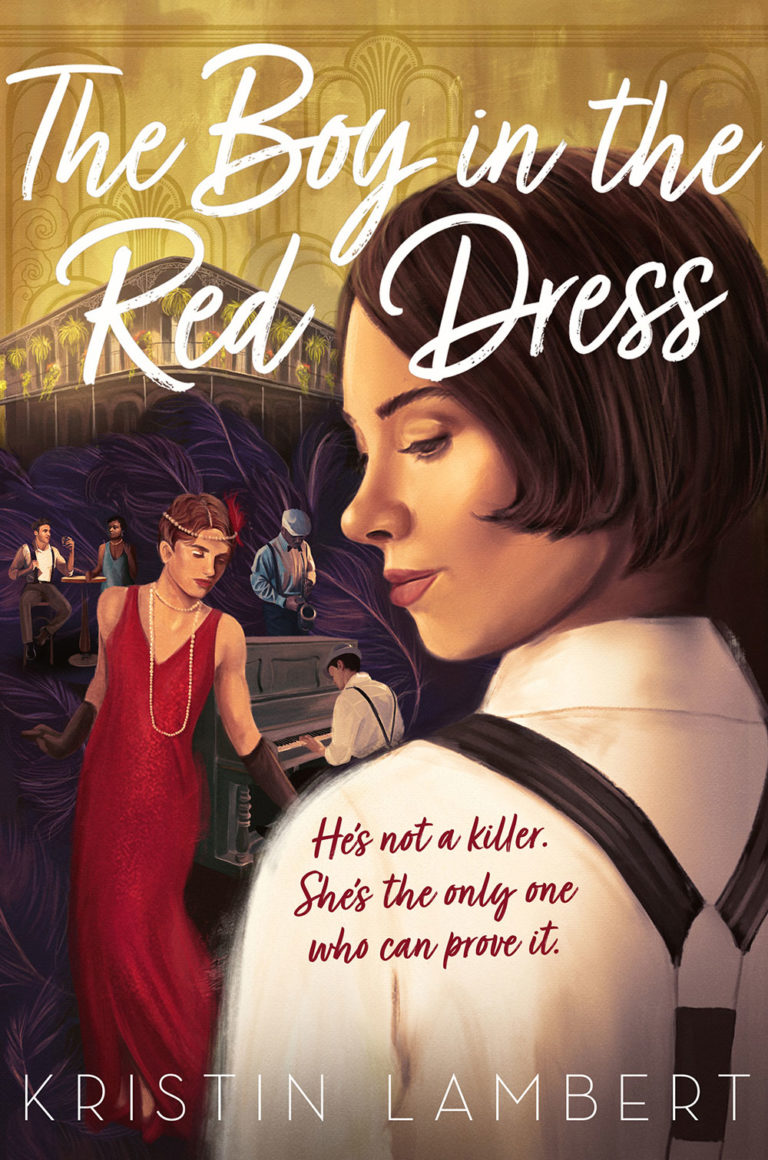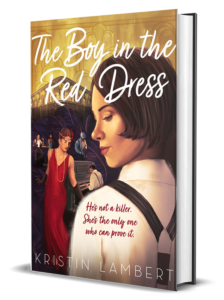The Boy in the Red Dress
A Gentleman's Guide to Vice and Virtue meets Miss Fisher's Murder Mysteries in this rollicking romp of truth, lies, and troubled pasts.
It’s New Year’s Eve, 1929. Millie is running the show at the Cloak & Dagger, a swinging speakeasy in the French Quarter, while her aunt is out of town. The new year is just around the corner, and all of New Orleans is out to celebrate, but even wealthy partiers’ diamond earrings can’t outshine the real star of the night: the boy in the red dress. Marion is the club’s star performer and his fans are legion–if mostly underground.
When a young socialite wielding a photograph of Marion starts asking questions, Millie wonders if she’s just another fan. But then her body is found crumpled in the courtyard, dead from an apparent fall off the club’s balcony, and all signs point to Marion as the murderer. Millie knows he’s innocent, but local detectives aren’t so easily convinced.
As she chases clues that lead to cemeteries and dead ends, Millie’s attention is divided between the wry and beautiful Olive, a waitress at the Cloak & Dagger, and Bennie, the charming bootlegger who’s offered to help her solve the case. The clock is ticking for the fugitive Marion, but the truth of who the killer is might be closer than Millie thinks.
Viking Books for Young Readers
Publication Date: May 12, 2020
THE BOY IN THE RED DRESS is now available in the United States, Canada, United Kingdom, and Australia!
From Indie Bound or your fav local indie: https://tinyurl.com/y4d3fql3
From B&N: https://tinyurl.com/y5935jft
From Amazon: https://tinyurl.com/y6sdxsuc
On Audiobook from Google Play: https://tinyurl.com/y43946p2

Excerpt:
“She’s dead!” wailed one of the girls. “Her eyes! Just look at her eyes!”
They were open, staring upward as if into the shadowed face of the dark-haired boy hovering over her. Her head lay at a strange angle against the foot of the fountain. A fine mist beaded and glistened on her pale brow, her beautifully rounded cheekbones, her pink lips, her bright hair.
It was Arimentha. The girl who’d known Marion. The girl who’d wronged him terribly once, somehow, by her own admission.
But whatever she’d done, she hadn’t deserved this. To die here on the cold ground, her body left to grow damp with mist and mop water while seventeen versions of “Auld Lang Syne” played around her and the whole Quarter celebrated.
No one deserved this.
My eyes pricked with tears I wasn’t expecting. Why should I cry for this girl? Why should I feel bile in the back of my own throat at the sight of her blank eyes, her wasted life? “Do you know what happened to her?” Frank asked, looking around at the rich kids. “Did you see anything?”
They shook their heads, their eyes wide and staring.
“I think . . .” Rockefeller spoke up, his voice choked. “I think she fell off the balcony.”
“Or someone pushed her,” one of the girls whimpered, the brunette who until recently had been screaming continuously.
“What was she doing up there?” the other girl said. She was almost my height with auburn hair, though everything was washed strange and blue in the moonlight. “Look there in her hand—what’s that?”
A folded paper lay in Arimentha’s softly curled hand. In two strides, I’d reached her and plucked the paper up into my own hand.
“You shouldn’t do that,” Rockefeller said, straightening out of his crouch. “The police will want the crime scene to stay as it is.”
“If it’s a crime at all,” I said. “Like you said, she could’ve fallen.”
Whether this was a murder or an accident, it had happened at Aunt Cal’s club—my club tonight—and I would decide what we did about it.
I held the paper up to the moonlight and saw it was a playbill for a circus that had already left town the week before. We had a stack of them still sitting on the end of the bar.
“What is it?” Fitzroy said, standing, too.
I ignored him and unfolded the paper. There was writing inside, a brief penciled letter, in a hand that looked like it would’ve been pretty if it wasn’t scrawled in such a hurry. I didn’t have the light or patience to interpret all the words, but I didn’t have to.
The letter began with “Dear Marion.”
















